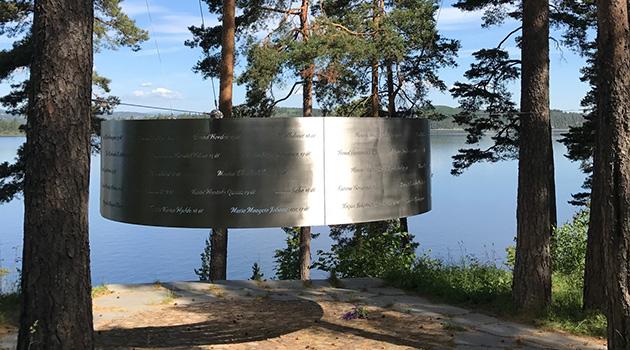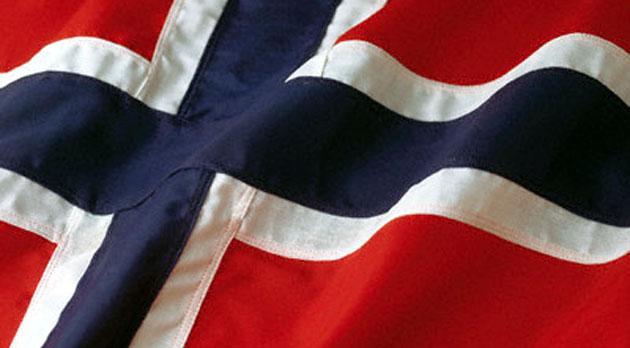Czech institutions designing memorial about the genocide of the Roma are inspired by Norwegian remembrance sites

Representatives of institutions contributing to designing the building of a new memorial to the genocide of the Roma at Lety u Písku in the Czech Republic made a trip at the beginning of June to locations that commemorate various historical events in Norway. The 10-member group visited leading Norwegian institutions working with awareness about the events of the Second World War as well as more recent history.
Czech Deputy Culture Minister René Schreier; the Czech Culture Minister’s advisr Martin Černý; the head of the Office of the Government’s Council on Roma Minority Affairs Martin Martínek; Deputy Justice Minister in charge of the Human Rights Section Martina Štěpánková; director of the Museum of Romani Culture Jana Horváthová; head of the museum’s Department of Lecturers Eva Dittingerová; head of the museum’s Department of Public Relations, Kristina Kohoutová; chair of the Committee for the Redress of the Romani Holocaust, Čeněk Růžička; Romani eyewitness Rudolf Murka; and Terje B. Englund, Communications and Trade Adviser to the Embassy of the Kingdom of Norway in Prague all participated in the trip.
The first stop was the Falstad Centre in the far north, where during the war SS units established a prison camp (1941-1945). That camp was administered by the Germans and was part of the network of concentration camps established by the Nazis all over Europe.
A sad fact is that in the nearby forest there were frequent executions of prisoners (around 200 prisoners of war, especially from the Soviet Union and Yugoslavia were murdered in that location). For Norwegians the location is very symbolic because, prior to the war (beginning in 1921) a correctional institution for juveniles had been in operation there and then, after the war the place was again used as a school for disabled and problematic pupils from 1951 until 1992.
Falstad Centre has functioned as a memorial since 2006, addressing the question of how to combine commemoration and remembrance with education. “In my assessment what is very positive is the sensitive combination there of a location of remembrance with an education facility. I would especially like to emphasize the way such education is undertaken there – it is a center commemorating the events of the Second World War that also dedicates itself to the subject of how to prevent violence in general. That’s a way forward for education in our Museum – or rather, it would be appropriate to teach that subject in our own country in the primary schools also,” explained the director of the Museum of Romani Culture in the Czech Republic.
The next institution visited was located in the capital, Oslo. The Center for Studies of the Holocaust and Religious Minorities is based in the Vila Grande where, during the war Vikdun Quisling, head of the pro-Nazi puppet government (who was executed after the war), was headquartered.
That center is dedicated to commemoration, education and research in the area of the persecution of ethnic and religious minorities in Norway during the Second World War. It was opened in 2005 and collaborates with other institutions internationally.
The extensive exhibition there presents the history of the Second World War from the rise of nationalism through to events that are specific to Norway. The Center also creates education programs for the prevention of violence.
The next important stop on the trip was the 22 July Centre (22 Juli Senteret) commemorating the neo-Nazi terrorist attacks in Oslo and on the island of Utoya. That center is located in the Government building that was damaged by that attack.
Opened on 22 July 2015, the center provides not just a commemoration site to remember the victims, but also a place to work with groups of students as part of their education about democracy. On the final day of their tour the visitors from the Czech Republic got the opportunity to visit the island of Utoya – the location where 69 victims attending a youth camp were murdered in 2011.
“Jørgen Watne Frydnes, who contacted the administration of the island of Utoya one week after the attack with the aim of building a memorial to the victims and an education center there, gave us a tour of the island. In the exhibition presenting the long history of the island as a location for holding the annual summertime meetings of the youth organization of the Norwegian Labor Party, we were able to comprehend the symbolic importance of that island for Norway. After that we visited Hengnhuset (the memorial at the site of the cafeteria) and the education center. The basic message of that place and its educational programs is that only commemoration that is part of the present-day life of the society is meaningful. Utoya is not meant to just be a place of mourning, but also a place of hope for the future, for teaching,” Kristina Kohoutová told news server Romea.cz.
“The visit to the island was very interesting. The memorial that commemorates the victims is located at a place where nobody actually died, it is a metal ring that is suspended at a particular point in the landscape. The names of the victims are cut out in the ring and it is possible to put flowers in the letters and to honor, in a specific way, the memory of those innocent victims. I would like to emphasize that what was a priority there was the idea that was to be communicated. It could be something very simple and the question of cost was not the main priority there,” Čeněk Růžička said of his impressions from the visit to Utoya.
The group also visited the European Wergeland Centre in Oslo, which is supported by the Council of Europe and the Norwegian Government and aims to educate about democracy, human rights, intercultural comprehension and interpersonal relationships. That center collaborates with many institutions in Europe and Norway.
That center has been a key contributor to an education program called “School of Democracy” which takes place on Utoya island. It is the umbrella organization for education on that topic.
There are three basic ideas for that center’s educational activities: Commemoration – Education – Involvement in present-day issues. “During our joint meeting we had the opportunity to learn something more about the activities of the Wergeland Center in many countries of Europe and to present the future project we are planning in Prague. We would like to support the idea of creating a platform that would bring together representatives of the Romani minority and that would also serve as a cultural center informing the public about the culture and history of Roma and Sinti people as well as facilitating interdisciplinary dialogue,” the Deputy Justice Minister summarized that part of the visit.
“Taking the trip together brought about many interesting encounters and is opening up new opportunities for collaboration. It was decidedly beneficial to see how the issue of commemoration and the construction of memorials is dealt with in Norway. Lety u Písku has become a kind of symbol for the Czech Republic and it is very important for us to build something there that will be timeless and will manage to communicate its message both to the domestic and to the international public. The first step that we have already managed to implement is buying the pig farm on the site, and currently we are on the brink of a phase that that is no less decisive – having a good discussion where we think through the form of the new memorial. I would like to thank the Norwegian Embassy for this inspiring trip, which aided us, among other matters, in establishing relationships with other professionals,” the Deputy Culture Minister said.
